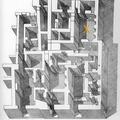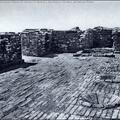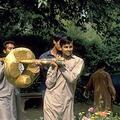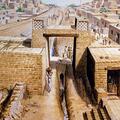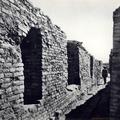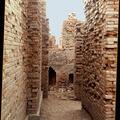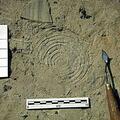Large Indus House and Interior Room Drawing, Mohenjo-daro
John Marshall writes "House 13 in the VS Area has a more elaborate plan . . . On its ground floor are four fair-sized courts, ten smaller rooms, three staircases, a porter's lodge, and a well-chamber.

